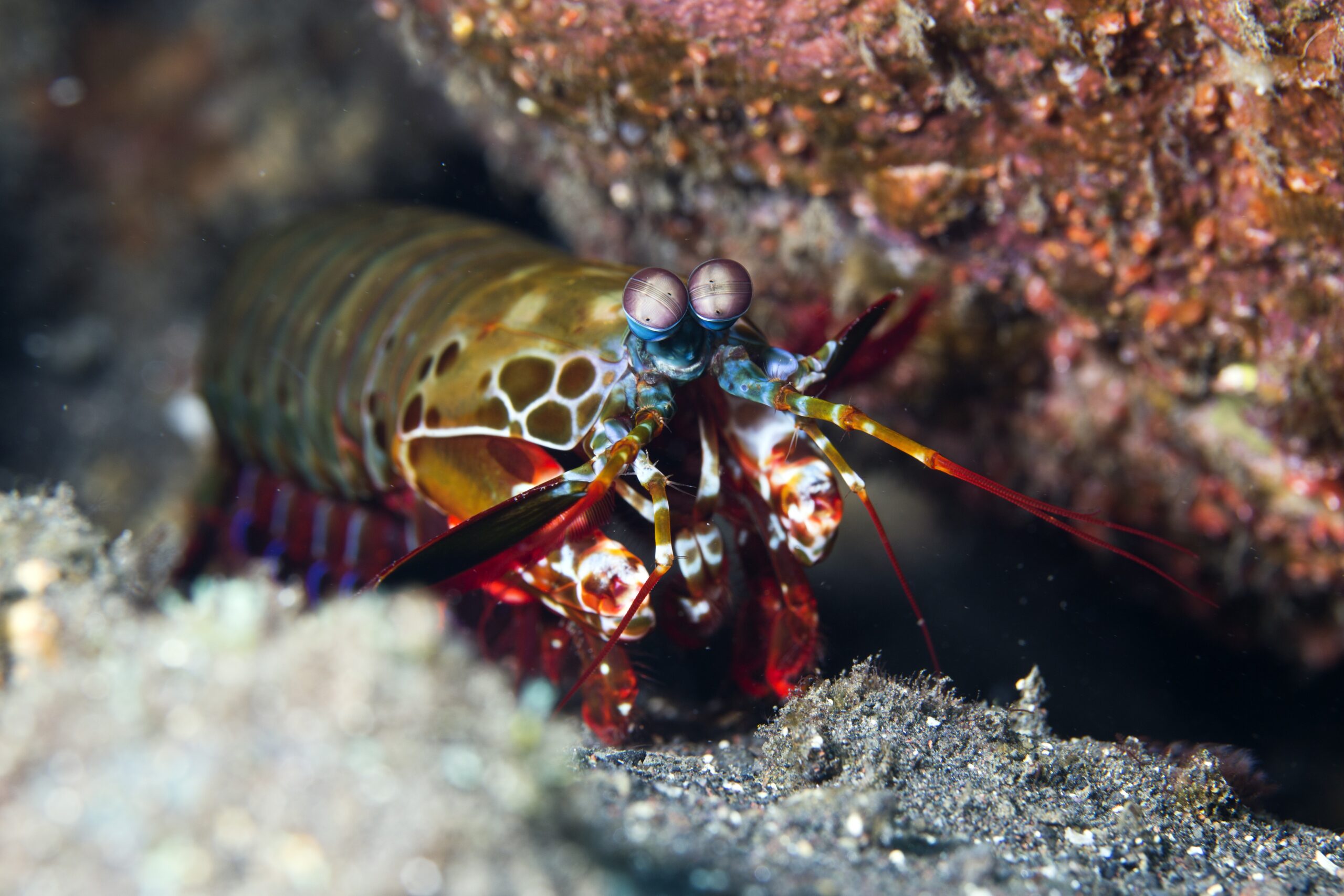The latest issue of National Geographic Magazine features research by UMBC’s Tom Cronin, professor of biological sciences, on the photogenic and compelling mantis shrimp. Cronin studies the visual physiology of invertebrates, especially those of marine and estuarine crustaceans, and his mantis shrimp research works to decode one of the most unique visual systems in the animal kingdom.
The brightly colored mantis shrimp is known for powerful arms that protrude from beneath its head and have the ability to rapidly punch and break hard surfaces, from seashells to aquarium glass. The unique physiology of the mantis shrimp’s eyes enables the animal to see parts of the ultraviolet spectrum that are not visible to humans. Whereas humans have only three types of color receptors, mantis shrimp have twelve, Cronin’s research reveals.
Scientists previously thought that the receptors in mantis shrimp were able to detect tiny differences between hues, but that theory was debunked in 2013. One newer theory suggests the receptors in a mantis shrimp’s eyes pass input from visual stimulation directly to their brain, allowing the brain to compare the raw data against, essentially, a table of different colors. Theoretically, these unique visual receptors could enable the species to make quick decisions. Based on his research, however, Cronin isn’t convinced He says, “There remains the question, ‘What’s it all for?’”
Read the full article, “Inside the Eye: Nature’s Most Exquisite Creation,” in National Geographic Magazine. An excerpt of the National Geographic Magazine article, “The eyes of the animal kingdom,” appeared in The Week.
Photo by Prilfish, CC by 2.0.

